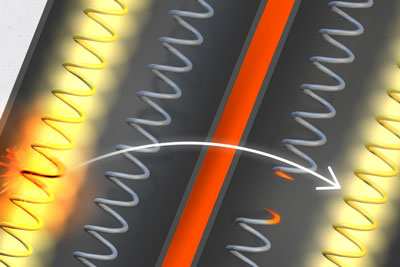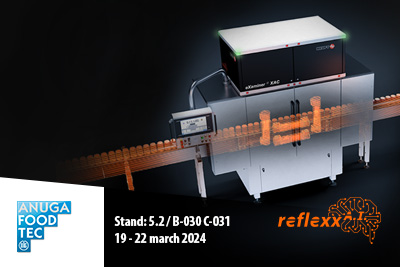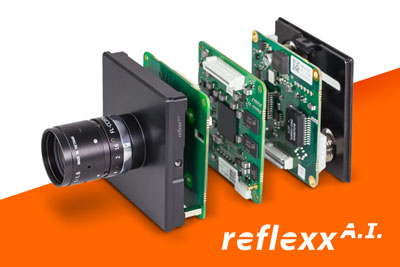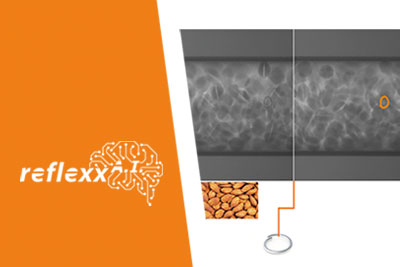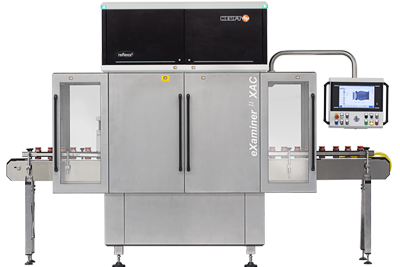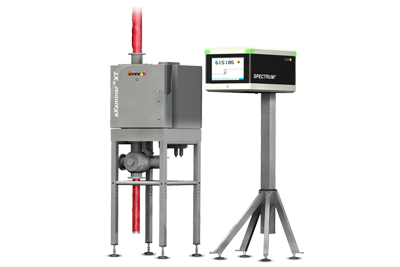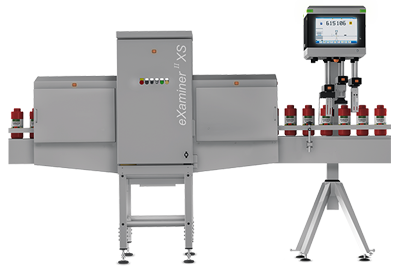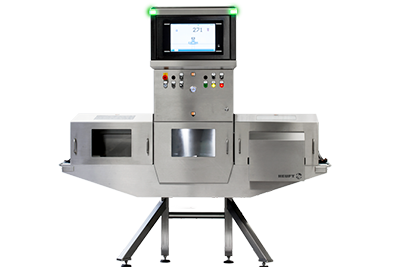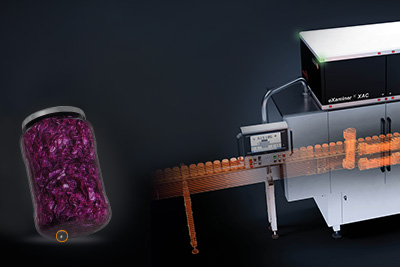FachPack 2025: Sustainability through AI
At the HEUFT booth 3C-339 at FachPack Nuremberg, he will be happy to show you on site from September 23 to 25, 2025, how HEUFT reflexx A.I. helps to make foreign objects visible even under challenging conditions and effectively prevents the waste of packaging and food. Dirk Henschke, HEUFT product manager for X-ray inspection of food, explains the role of deep learning in this process in an interview here.
Why is intelligent in-line inspection so important in food and beverage production?

Dirk Henschke: More and more legal requirements and increasing certification pressure from large retail chains are forcing food and beverage manufacturers to guarantee the highest level of product quality, packaging integrity and food safety right in the filling and packaging process. Nowadays, no manufacturer can avoid quality checks on every single product.
What are the typical applications and where do they reach their limits?
Dirk Henschke: The spectrum ranges from fill level checks, which ensure that nobody receives less than they paid for, to the identification of critical packaging defects and the detection of glass splinters in the product. Such foreign bodies are a real health risk and count among the most frequent causes of product recalls. And they are not good for the brand image. It is therefore essential that affected packaging and products are recognised and sorted out before they are placed on the market. However, a visual inspection is often not enough, especially in the case of opaque packaging or contents. In such cases, it should be replaced or supplemented by an X-ray inspection to ensure food safety and brand protection.
In your opinion, which sectors currently have the greatest need for smart new inspection technologies?
Dirk Henschke: The circular economy and reusable systems are a major issue in the beverage sector, which is now also becoming increasingly important outside Germany. Wherever glass bottles are filled more than once, both are important: a gap-free empty bottle inspection at the beginning and a thorough full bottle inspection at the beginning and a thorough full container inspection at the end of the line. We are leaders in both areas. This is not limited to optical inspection technologies developed and manufactured in-house. In difficult cases, for example when it comes to glass-in-glass detection in empty and full containers, our pulsed X-ray technology is practically indispensable. Modular systems such as the HEUFT eXaminer II XOS combine both detection methods in one and the same device so that, for example, mould or transparent films in the bottle are identified using camera-based technology and glass splinters or metal fragments are identified using X-ray technology.
And what about food?
Dirk Henschke: In the food filling and packaging process, optical inspection technologies are used to check labels, verify best-before dates and check the safety and integrity of closures, among other things. However, cameras are not enough to identify tiny foreign objects in opaque packaging or products such as tins or baby food. This is where X-rays are needed – preferably pulsed X-rays, which now simply achieve greater sensitivity with unrivalled low radiation and are available exclusively from HEUFT.
What is currently trending in this area? Which innovations are you particularly excited about at the moment?
Dirk Henschke: Sustainability and AI, or artificial intelligence – in our view, these are the top trends in the industry right now. Sustainability ensures the lowest possible false rejection rate during in-line inspection: only packaging and products that are actually faulty should be removed from circulation. And our AI helps to increase detection and rejection reliability so that the proportion of incorrectly rejected products tends towards zero. This provides intelligent and effective protection against pointless packaging and food waste and also against unnecessary losses in efficiency and productivity in the filling and packaging process.
AI – what innovations does HEUFT have to show in this area?
Dirk Henschke: We have been manufacturing sophisticated optical technologies for the seamless inspection of empty and full containers exclusively here in Germany for over 45 years – and we are continuously developing them further. This also applies to our pulsed X-ray technology, which we introduced around 25 years ago to enable gentle and precise detection of foreign objects even in high-speed lines. Our own hardware and software for real-time image processing has been intelligently classifying detected objects for almost 15 years in order to clearly distinguish harmless deviations from critical defects. HEUFT reflexx A.I. is now even using deep learning to visualise foreign objects in places where this was previously difficult or impossible.
How does this work and what is possible with AI-supported image processing?
Dirk Henschke: For smart X-ray image analysis in food packaging lines, multi-layered neural networks are now being used that independently process abstract features in a meaningful way. Foreign bodies can now be recognised, especially in food products that appear very inhomogeneous in the X-ray image, with structures and cavities between their individual components that absorb different amounts of light. HEUFTreflexx A.I. . Inspection systems from the HEUFT eXaminer II series can find the aluminium fragment in the gherkins or the glass splinter in the red cabbage jar, for example. And even ring-shaped wire in pasta of the same shape and size.
And customers like that?
Dirk Henschke: Absolutely. We are currently experiencing a real run on our innovations in AI-supported X-ray inspection. Tests with original products and initial installations are already confirming the new level of detection reliability with a sustainably reduced false rejection rate in practice. If you want to see this for yourself, it is best to come directly to the HEUFT stand 3C-399 when FACHPACK 2025 starts at the end of September in the Exhibition Centre Nuremberg.


